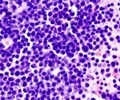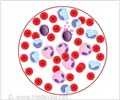If your kid complains that his math homework is of no use in real life, convey him this simple message - the subject can help cure leukemia.
In a new study that combined math and medicine, researchers have shown that patients with Chronic Myelogenous Leukemia (CML) may be cured of the disease with an optimally timed cancer vaccine, where the timing is determined based on their own immune response.Published in the June 20 edition of the journal PLoS Computational Biology, University of Maryland associate professor of mathematics Doron Levy, Stanford Medical School physician and associate professor of medicine (hematology) Peter P. Lee, and Dr. Peter S. Kim, École Supérieure d'Électricité (Gif-sur-Yvette, France) describe their success in creating a mathematical model which predicts that anti-leukemia immune response in CML patients using the drug imatinib can be stimulated in a way that might provide a cure for the disease.
"By combining novel biological data and mathematical modeling, we found rules for designing adaptive treatments for each specific patient," said Levy, of the University of Maryland Center for Scientific Computation and Mathematical Modeling.
"Give me a thousand patients and, with this mathematical model, I can give you a thousand different customized treatment plans," Levy added.
In the study, the researchers took into account the patient's natural immune response in conjunction with the effects of imatinib, a drug that has been successful in putting CML patients into remission.
They wanted to see if they could develop a mathematical model, or set of rules, that would increase chances for long-term remission in individual patients.
Advertisement
"Our results suggest that it is not only the drug that sends the leukemia into remission, it's also the natural immune response. After starting imatinib, the anti-leukemia immune response gradually increases. However, it begins to weaken after it reaches a peak. This typically happens well into the treatment," Levy said.
Advertisement
The mathematical model suggests that the immune response of the patients should be boosted at the time when their immune response starts weakening.
Source-ANI
SPH








